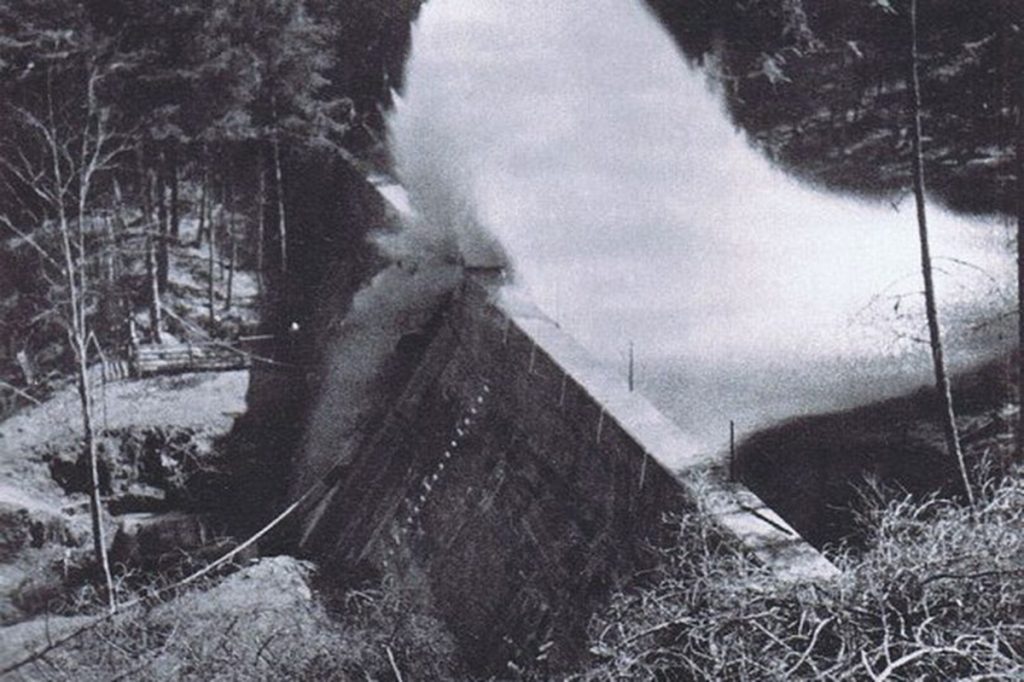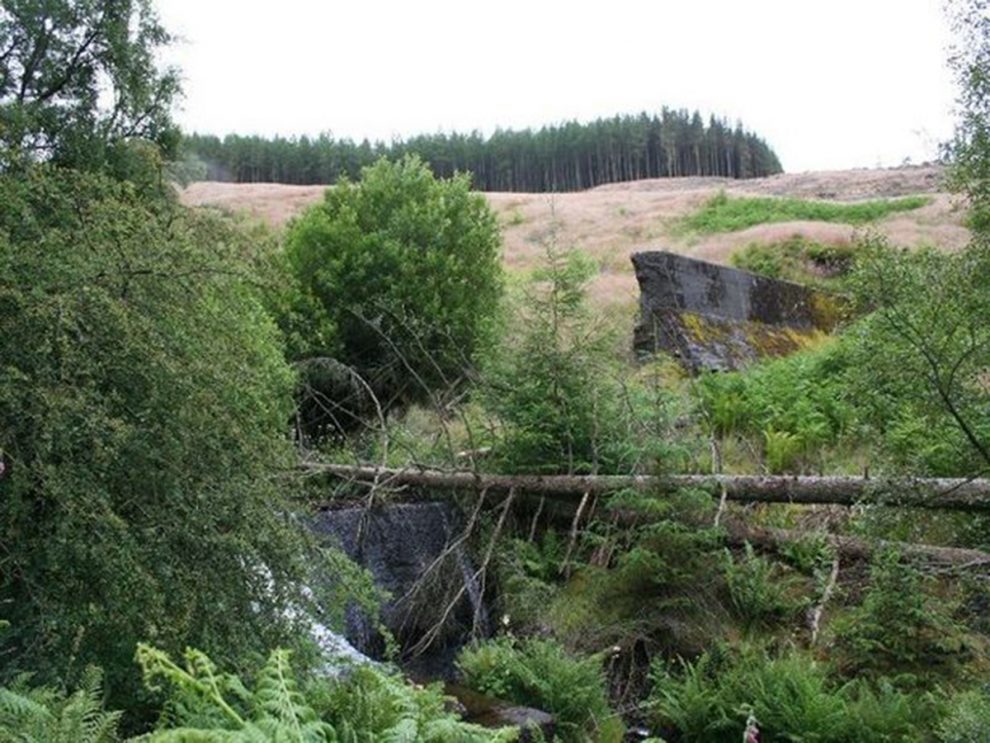The Dambusters Raid of 1943 is one of the most famous moments of World War 2, and the origins of the operation go all the way back to a remote Welsh location in the Elan Valley.
This is the story of the Dambuster.
It all starts with a small masonry dam which was built across the Nant-y-Gro stream in the early stages of the construction of the dams and reservoirs in the Elan Valley.
This dam created a million gallon reservoir on the rocky slopes above Caban Coch which was used to provide a water supply fed by a pipeline to the navvies village below.
The supply also filled water storage tanks used by the locomotives, steam cranes, stone cutting machines and other steam driven plant in the two valleys.
After the completion of the waterworks scheme the Nant-y-Gro dam was no longer needed, because the permanent stone-built Elan Village which replaced the temporary navvies village obtained a water supply under the new scheme.
The Nant-y-Gro dam, however, was still intact at the time of the war, when the government requested the use of the 35 feet high dam for secret experiments.
These were linked to the wartime military objective of breaching a series of large dams in the Ruhr Valley in Germany in order to disrupt armaments production in the industrial heartlands of the Ruhr below the dams.
A great deal of highly secret experimental work was being carried under the direction of Barnes Wallis, an aeronautical engineer, and the Nant-y-Gro dam, though much smaller, provided a valuable testbed for devising a practical means of breaching the huge Mohne, Eder and other masonry dams.
A further advantage of the use of the Elan Valley site was its remoteness, ideal for top secret trials without fear of being observed.
The Nant-y-Gro experiments were preceded by trials on scale models at government research stations near London, involving the detonation of scaled amounts of explosives at varying distances from the walls of the model dams.
In May 1942 the first live explosive tests on the dam itself were carried out in the Elan Valley, watched by Barnes Wallis. These first attempts were spectacular, but they did not seriously damage the Nant-y-Gro dam.
After further development work, another attempt was made in July 1942. A mine was suspended at the optimum depth by scaffolding from the mid point of the 180 feet long dam, and detonated remotely.
A huge central section of the dam wall was successfully blasted away in a massive explosion.

This successful trial confirmed that it would be necessary to deliver an explosive device under water and in direct contact with a dam wall in order to do the job.
It was known that all major dams would be safeguarded by protective netting positioned to prevent mines or torpedoes from reaching them, so the Elan Valley tests were followed by an extensive programme of highly secret trials at other locations in Britain which were to result in the famous ‘bouncing bomb’ devised by Barnes Wallis.
The so-called ‘bouncing bomb’ was actually a revolving depth charge, to be suspended in a belt-driven cradle beneath a Lancaster bomber. Resembling a large oil-drum, the bomb was to be set spinning in reverse before being dropped at a height of just 60 feet and at a very precise speed and position in front of the target dam.
The action of the device was to skip across the surface above the defensive netting until making contact with the face of the dam, and then roll down under the surface due to the spinning action of the mine.
The depth charge was then intended to detonate underwater right beside the vertical dam wall.
19 specially equipped Lancaster bombers of 617 Squadron, RAF led by Wing Commander Guy Gibson took off from Scampton in Lincolnshire on the night of May 16th/17th, 1943 headed for the Ruhr Valley.
The mission was an exceptionally risky one because of the heavy underslung payload beneath the bombers and the need to approach the targets at a very low altitude exposed to heavy defensive ground fire.
The Mohne and Eder dams were breached in the attacks, and the Sorpe dam was damaged.
Eight of the 19 aircraft failed to return, and 53 of 133 aircrew were killed in the operation. The outstanding bravery of those involved was recognised by the number of medals awarded, including the Victoria Cross presented to Guy Gibson.
The remains of the Nant-y-Gro dam can still be seen today in much the same condition as it was left after the secret wartime experiments of 1942. A walk which passes the site is signposted from the Elan Valley Visitor Centre, which is just below the Caban Coch dam.
The breaching of the German dams in 1943 by the RAF led to the rapid introduction of improved defensive measures to protect the Elan Valley dams and other large dams elsewhere in Britain.


















Add Comment